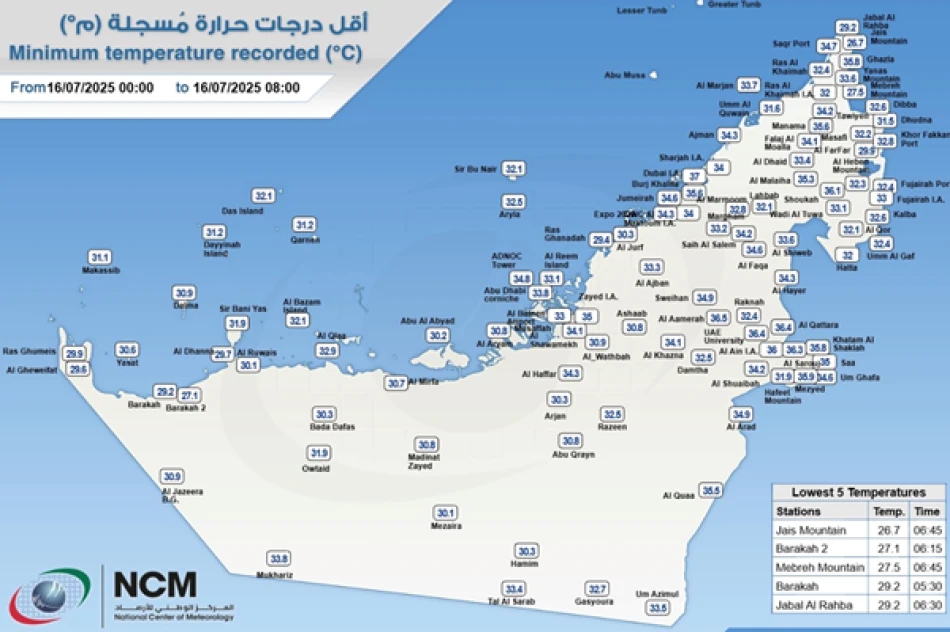
Meteorological Authority Reveals Lowest Temperature in the UAE
UAE Records Surprisingly High Winter Low of 26.7°C, Highlighting Regional Climate Patterns
The UAE's National Center of Meteorology recorded a minimum temperature of 26.7°C (80°F) on Wednesday morning at Jebel Jais in Ras Al Khaimah, underscoring the country's consistently warm climate even during winter months and reflecting broader regional weather patterns that impact everything from energy consumption to tourism flows.
Mountain Peak Sets National Temperature Floor
At 6:45 AM local time, Jebel Jais—the UAE's highest peak at 1,934 meters above sea level—registered the country's coolest temperature for the day. The reading demonstrates how even the UAE's most elevated terrain maintains temperatures that would be considered warm in most global contexts, particularly during what is traditionally the region's coolest season.
Regional Climate Context and Implications
This temperature reading reflects the UAE's position within the Arabian Peninsula's arid subtropical climate zone, where winter lows rarely drop below 20°C even in mountainous areas. The consistent warmth has significant implications for the country's energy infrastructure, as cooling demands remain substantial year-round, driving continued investment in efficient air conditioning systems and renewable energy projects.
Tourism and Economic Impact
The mild winter temperatures support the UAE's position as a year-round destination, particularly during the Northern Hemisphere's winter months when European and North American tourists seek warmer climates. This weather consistency has helped establish the UAE as a reliable alternative to seasonal Mediterranean destinations, contributing to the country's diversification away from oil dependence.
Comparative Regional Analysis
Compared to neighboring Gulf states, the UAE's winter temperatures align closely with Qatar and Bahrain, while remaining slightly warmer than Saudi Arabia's northern regions. This climatic stability differentiates the Gulf region from other major business hubs like Singapore, where tropical monsoons create more variable conditions, or Hong Kong, where winter temperatures can drop significantly lower.
Infrastructure and Development Considerations
The consistently high minimum temperatures influence urban planning and construction standards across the Emirates. Building codes prioritize cooling efficiency over heating systems, while outdoor event scheduling and construction timelines are optimized around temperature patterns that remain predictable throughout the year.
These weather patterns also support the UAE's growing focus on climate-controlled indoor attractions and facilities, from massive shopping complexes to indoor ski slopes, which capitalize on the contrast between natural and artificial environments while providing relief from the persistent heat.
Most Viewed News

 Layla Al Mansoori
Layla Al Mansoori






